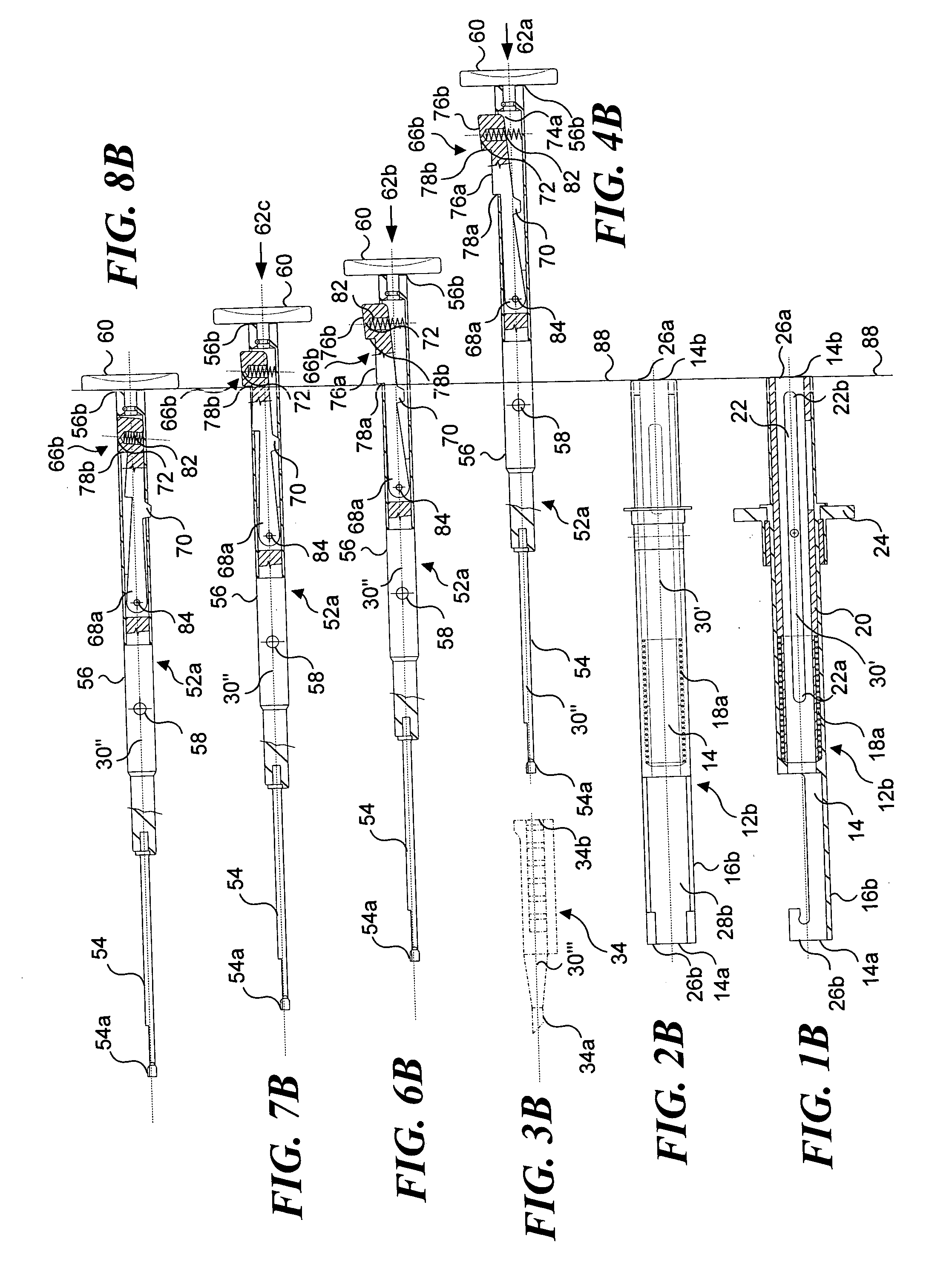Intraocular lens inserter
a technology of inserters and lenses, applied in the field of ophthalmic surgical devices for implanting lenses, can solve the problems of deteriorating vision, affecting the ophthalmic effect of patients, and acclimating to the thick lenses required in glasses, and achieves the effects of preventing buckling of the advancer, reducing the risk of eye damage, and being easy to bend
- Summary
- Abstract
- Description
- Claims
- Application Information
AI Technical Summary
Benefits of technology
Problems solved by technology
Method used
Image
Examples
sixth embodiment
[0135] an inserter, shows a fourth configuration of a multi-step detent, multi-step detent 66d, which is disposed in a first cavity 74b, as illustrated in FIGS. 14A, 14B, and 14C. With reference to FIG. 14A, multi-step detent 66d includes first detent releaser 100a, and a second detent releaser 100b. These releasers are disposed under an arm 98b that is mounted to the outer surface of the elongate housing. This elongate housing includes a first orifice 96b and a second orifice 96c that are spaced apart along longitudinal axis 30′ at positions defining the first detent position and the second detent position. The first detent releaser is adjacent to the first orifice, and the second detent releaser is adjacent to the second orifice. A mover 52d also includes first cavity 74b and a pin 94c. Pin 94c is disposed within the first cavity and is biased outwardly by a cantilevered spring arm 102. The pin is sized to fit within the first orifice and the second orifice. FIGS. 14A, 14B, and 14...
seventh embodiment
[0139] an inserter includes a fifth configuration of a multi-step detent, multi-step detent 66e, as shown in FIGS. 15A, 15B, and 15C. Multi-step detent 66e includes a collar 104 that is disposed adjacent to an orifice 96d formed in the housing. Collar 104 includes a pin 94d, and the collar is biased to force the pin inwardly through the orifice by a helical-type collar spring 106. Collar spring 106 is disposed between the exterior surface of the elongate housing and the radially inner surface of the collar, at a point opposite pin 94d. A mover 52e also includes first cavity 74a and a second cavity 90c, which are each sized to receive pin 94d, when it passes through orifice 96d. FIG. 15A illustrates a portion of intraocular lens inserter 10 prior to engagement of multi-step detent 66e in the first detent position. In this Figure, collar spring 106 is shown in a compressed state such that pin 94d is biased inwardly, pushing on mover 52e.
[0140] When the surgeon applies longitudinal ma...
PUM
 Login to View More
Login to View More Abstract
Description
Claims
Application Information
 Login to View More
Login to View More - R&D
- Intellectual Property
- Life Sciences
- Materials
- Tech Scout
- Unparalleled Data Quality
- Higher Quality Content
- 60% Fewer Hallucinations
Browse by: Latest US Patents, China's latest patents, Technical Efficacy Thesaurus, Application Domain, Technology Topic, Popular Technical Reports.
© 2025 PatSnap. All rights reserved.Legal|Privacy policy|Modern Slavery Act Transparency Statement|Sitemap|About US| Contact US: help@patsnap.com



